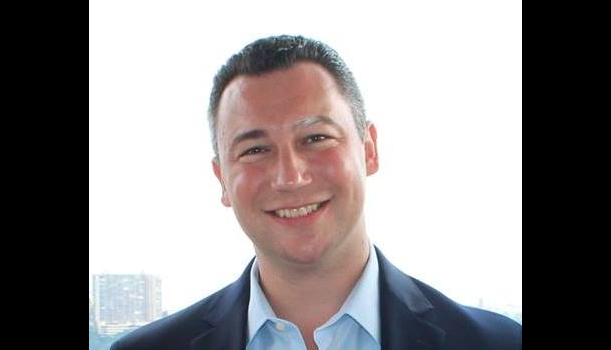
“WE THRIVE IN CHAOS”: Team Rubicon’s Jon Connors Discusses the Organization’s Resolute Approach to Disaster Relief
ABOVE: If you ever see Gen. Russel Honore (left) and Anderson Cooper (right) on your street, you’d better hope Jon Connors (center) and Team Rubicon are nearby as well.
hMAG is exceedingly proud to support Team Rubicon, in their efforts to provide relief to the victims of Hurricanes Harvey and Irma.
We were lucky enough to catch up with Team Rubicon Region 2 Administrator and Jersey City resident Jon Connors—a very busy man these days, as he’s currently deployed in Texas and helping lead the recovery there—who gives us some insight into Team Rubicon’s mission, mindset and impact in the communities they aim to assist.
hMAG: What is Team Rubicon?
Jon Connors, Team Rubicon Region 2 Administrator: Team Rubicon’s primary mission is providing disaster relief to those affected by natural disasters, be they domestic or international.
h: Can you explain the story behind the intriguing name?
JC: When Julius Caesar crossed the Rubicon at the head of his legions and marched on Rome, it marked a point of no return. The phrase “crossing the Rubicon” has since survived in reference to any group committing itself to a risky course of action. On January 17th, 2010, despite government and large aid organization’s advice not to proceed, Team Rubicon members crossed the Artibonite River separating the Dominican Republic and Haiti, carrying crucial gear and medical supplies to the people of Port-au-Prince. Once across, they were irrevocably committed to their task. Hence the name: Team Rubicon.
 h: How does Team Rubicon’s approach to disaster relief make it such an effective organization?
h: How does Team Rubicon’s approach to disaster relief make it such an effective organization?
JC: By pairing the skills and experiences of military veterans with first responders, medical professionals, and technology solutions, we aim to provide the greatest service and impact possible.
Through continued service, we seek to provide our veterans with three things they lose after leaving the military: a purpose, gained through disaster relief; community, built by serving with others; and self-worth, from recognizing the impact one individual can make.
Team Rubicon has adopted FEMA’s National Incident Management System, which gives our disaster response teams an advantage in being able to communicate and interact seamlessly with federal, state and county agencies.
h: Where have you personally been deployed? What have been the most challenging situations in which you’ve found yourself as a team member?
JC: While I try and spend most of my time in New Jersey working with members, getting them trained, engaged and deployed I have been fortunate to deploy to operations outside of our region. Obviously, right now I’m in Houston for our largest operation to date, Operation Hard Hustle. This operation will last for about two months and we’ll get about 2,000 volunteers deployed down here to help. We will then have a presence here and continue to work for a very long time.
I was also deployed two years ago to Nepal after the massive earthquake there for Operation Tenzing where we provided medical response, search and rescue, and debris clearing in remote villages that were destroyed. That deployment was definitely a challenge. Our teams would travel for hours to get to villages high in the mountains on roads that were torn up or affected by landslides.
h: This particular hurricane season is shaping up to be pretty significant. What do relief organizations need most to meet this increased demand? What are the more effective ways people can help out?
JC: It does look to be a busy season for sure. Most organizations need donations to support recovery needs. Donating clothes and shoes and stuff is a great thing to do, but ensure the organization you are donating to has the logistical support it needs to get those goods to the disaster area. That’s why donating money is better, that can use it to spend in local areas to help victims, and the local economy. Research the organization you’re donating to. Ensure the money is going to the victims and not to salaries or organizational overhead. At Team Rubicon we have a commitment to transparency for our donors, and we account for every dollar we spend and make that information public. Finally, if you have time, volunteer! There are a ton of volunteer organizations that need people to help!
 h: How did you get involved with Team Rubicon? Is this a full-time commitment? How can others get involved?
h: How did you get involved with Team Rubicon? Is this a full-time commitment? How can others get involved?
JC: I got out of the Marine Corps about 20 years ago, and ever since had been trying to find the right way to continue to serve. I’d volunteered with other organizations that do good work but never found the right fit for me. I worked in NYC doing various digital media gigs, but still felt that I was missing something in my life and I didn’t know what it was.
I had been following TR for a while by the time Hurricane Sandy hit and I was always impressed with their mission. I spent a couple of months volunteering down in Sea Bright after the hurricane just on my own, and when I saw TR on the news a few times, doing great things in Union Beach and over in the Rockaways, I knew I had to step up and join. After I joined I did a few small projects and was hooked. Shortly after that, I joined our regional leadership team as the Communications Manager. A year after that I was blessed to be selected for TR’s Clay Hunt Fellows Program, a year-long leadership and training program named for Clay Hunt, one of Team Rubicon’s founding members who lost his battle with PTSD. Before the fellowship was over, I was hired as a full time employee to lead Region 2, which covers NY, NJ, Puerto Rico and the US Virgin Islands.
I never thought, over those 20 years after the military, that I’d find something as fulfilling as the Marines, but I did. And never in a million years did I think I’d be able to completely change my trajectory in my professional life, and do something I love so much for a living!
While we are a veteran-centric organization, we do also welcome civilians into our ranks as well. You can learn all about us at TeamRubiconUSA.org! The great thing about TR, is that you can participate as little or as much as you want depending on your life and your goals. Some folks may contribute by spreading info about TR on social media, others may lead fundraising campaigns, while others may take every training course we offer or deploy every chance they get to help kick disasters in the face!
h: How long have you lived in Hudson County? When you’re not out on deployment, where do you spend your time?
JC: I lived in Hoboken in the late 90s, and my wife and I moved to Jersey City about 15 years ago. I do have ties to the area though – my great grandfather was the first motorcycle cop in Hudson County (according to family lore), and my grandparents actually met at the YMCA in Hoboken on Washington Street! My Dad was born at Christ Hospital in Jersey City, which is right down the road from where we live now.
When I’m home, since we have two small kids, most of our free time is spent at parks in the Heights, Riverview or Washington Park. Our weekend path usually includes a stop at Congress Station for breakfast sandwiches, and later a stop at Mod Cup for some coffee. A new spot just opened on our block called The Cliff that is amazing also. If we go out for drinks or music without the kids, it’s to DC’s in Hoboken or Pet Shop in JC! For dinner spots we like Fox & Crow for a burger, Skinner’s Loft or Porta for pizza.
 h: Sandy was a pretty big event in many lives around here. How has it shaped your mindset, in terms of natural disaster response?
h: Sandy was a pretty big event in many lives around here. How has it shaped your mindset, in terms of natural disaster response?
JC: As I mentioned earlier, Sandy was the first natural disaster I’d seen up close. My brother’s town (Sea Bright) was completely destroyed. Spending time down there, volunteering for weeks and weeks, helped me realize that it was where my heart is. I want to help.
The other thing Sandy helped me realize is that even if the government is fully prepared for a natural disaster, it is still necessary that local communities come together to help each other thru it – both physically and emotionally.
Sadly, we are still helping families work on their homes that were damaged in Sandy, five years late. Five! That is a terribly unsettling fact, that we have people who are still trying to get back to “normal” five years late. But organizations like us, and our friends at Habitat for Humanity, and St. Bernard Project are still at it, trying to help.
‘Team Rubicon,’ a majority veteran volunteer group, deploys to Houston to help. “We do long term disaster relief” https://t.co/ZCAgIWU5pS
— New Day (@NewDay) September 1, 2017

 Previous Article
Previous Article Next Article
Next Article ALESSI’S MORE: Vocal Powerhouse Christina Alessi Releases a Brand New EP
ALESSI’S MORE: Vocal Powerhouse Christina Alessi Releases a Brand New EP  HOBOKEN TO THE HIMALAYAS: Local Resident/Irish Expat to Honor His Father by Climbing Everest
HOBOKEN TO THE HIMALAYAS: Local Resident/Irish Expat to Honor His Father by Climbing Everest  Former Running Mate John Allen Named as Bhalla’s Chief of Staff
Former Running Mate John Allen Named as Bhalla’s Chief of Staff  Michael Lisa — Photographer
Michael Lisa — Photographer  2017 HOBOKEN MAYORAL CANDIDATE QUESTIONNAIRE — Anthony L. Romano
2017 HOBOKEN MAYORAL CANDIDATE QUESTIONNAIRE — Anthony L. Romano  Patricia Gonzalez — Writer
Patricia Gonzalez — Writer  ON THE WATERFRONT STORYTELLING SERIES RETURNS TO MILE SQUARE THEATRE—Saturday, October 27 @ 8 p.m.
ON THE WATERFRONT STORYTELLING SERIES RETURNS TO MILE SQUARE THEATRE—Saturday, October 27 @ 8 p.m.  BEST FRIEND FOR HIRE: Best-Selling Author Mary Carlomagno Returns to Hoboken to Showcase Her New Novel—TUESDAY @ Maxwell’s
BEST FRIEND FOR HIRE: Best-Selling Author Mary Carlomagno Returns to Hoboken to Showcase Her New Novel—TUESDAY @ Maxwell’s